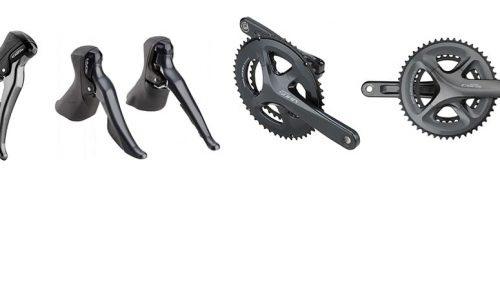Cycling is a fantastic sport, and it can be enjoyed as a simple bike ride, or you can jump into the technicalities. Many cyclists look into their data to try and improve their performance or even just because they find it interesting.
Looking into your cadence is a great way to understand your cycling but before we go into that, let’s talk about what it is and how we measure it.
What is Cadence?
Cadence is the measure of how quickly we pedal on the bike. It is measured in revolutions per minute or commonly known as RPM.
 We cycle in clockwise motions, so imagine you’re looking at a cyclist from the side, and for each total 24 hours, that is one revolution. If you were to count 60 revolutions in a minute, that would be 60rpm.
We cycle in clockwise motions, so imagine you’re looking at a cyclist from the side, and for each total 24 hours, that is one revolution. If you were to count 60 revolutions in a minute, that would be 60rpm.
You will commonly hear a lot about rpm in spinning classes and when it comes to indoor cycling. It is common to run drills with your cadence.
I personally was an indoor cycling instructor for many years, and one of my best classes was to leave the resistance where it was and speed up and slow down the cadence.
Simply power is cadence x torque.
Do you need to know your cadence?
You don’t need to know your cadence, but it can really help you improve. Typically many cyclists don’t use their optimum cadence and struggle to adjust it.
Using different cadences can affect the body and how you feel while you’re riding.
How do we measure our Cadence?
Cadence can be quite challenging to measure, and it does take some concentration, but there are ways to make it much easier for yourself. In the next section, we will speak about a couple of ways to measure your cadence.
Cadence sensor
A cadence sensor is an excellent bit of kit, and you will commonly see them on many bikes while you are out riding. They are a small box attached to your pedal arm.
Typically, they go on the left-hand side, the bike’s non-drive side. They work with magnetic sensors, which can gauge when a full rotation has been made.
Counting Cadence
Counting cadence is a great way to tell your cadence, but it isn’t very accurate and does take some concentration. I wouldn’t recommend it when you should be concentrating on the road.
While cycling, all you need to do is count how many times your knee gets to the highest point of the pedal stroke each minute, then you will know your cadence. I personally find counting for 30 seconds and doubling it much more efficient, in my opinion.
Spinning or Grinding
You will hear two terms when it comes to cadence and cycling. You have spinning, and you have grinding. These are terms that people say when typically they are attacking a hill and referring to their leg speed.
Spinning
Spinning refers to when you have your cadence very high, typically 100 revolutions per minute or more. This was made quite famous by the legendary Pro Cyclists when they would climb mountains with very quick legs.
Grinding
Grinding is the opposite, and it’s running at a very low cadence. Some people will literally go as low as 50 revolutions per minute, which takes a considerable amount of muscular strength.
What is the right cadence?
There’s no right or wrong cadence, and it’s personal to the rider. Typically most cyclists stay between 60-100 RPM. That doesn’t mean that 80 is the best place to be.
We are all built very differently. Larger muscular cyclists will often be in a higher gear and spend more time at a lower cadence grinding through the gears.
You will find smaller cyclists who might be less muscular will often use a higher cadence and spin up to a very high cadence. What works for you might not work for someone built with a similar build as you though. The right cadence for you is where you feel you are working most efficiently.
One thing that is commonly said, and there have been many scientific studies about it, is the higher the cadence, the less fatigue that will cause your muscles on longer rides. So commonly, ultra-distance riders or grand tour rides will favor a high cadence so that they can ride with less fatigue the next day.
Does Crank Arm Length affect Cycling Cadence?
This is a common question asked by many. It can affect cycling cadence, yes. With bigger crank arms, you will find that your feet will have a more significant rotation to make, so naturally, it can slow your RPM down.
It does give you more leverage to push through, so it does offer a more powerful pedal stroke to an extent.
Conclusion
Looking at your cadence has some great benefits, but naturally, your body will go at the speed which feels most comfortable.
Working in many ranges of cadence can be great for efficiency, and we highly recommend experimenting to see what effects it might have on you as a cyclist.

Robbie Ferri has spent years working in a bike shop, has worked with industry leading brands on product creation, has been a semi pro athlete, and is a fully qualified strength and conditioning coach. He has broken World Records, bikepacked all over the World and raced ultra distance at a top-level.




